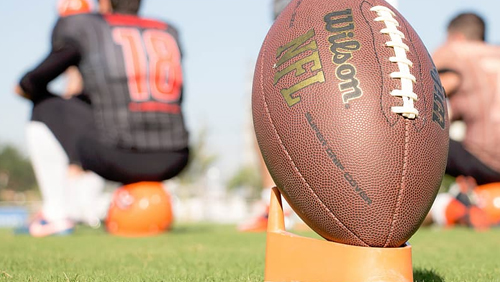Every year, ESPN dives into what it predicts will be the ranking of teams as the NFL season gets underway. This year is undeniably a little different, thanks to COVID-19, but the sports media giant hasn’t been remiss in its coverage. Seth Walder, an ESPN analyst, broke out ESPN’s Football Power Index (FPI) machine and cranked it up to see what the upcoming season may look like. After running 20,000 simulations, the FPI came up with its best results.
 After winning the Super Bowl last year, the Kansas City Chiefs are going to continue to be a strong force this year. The team received a 21% chance of winning the Super Bowl, better than that of any other team. It’s also the second-highest awarded since the FPI came online in 2015 – the New England Patriots received 32% in 2017 (the Pats ended up beating the Atlanta Falcons, 34-28).
After winning the Super Bowl last year, the Kansas City Chiefs are going to continue to be a strong force this year. The team received a 21% chance of winning the Super Bowl, better than that of any other team. It’s also the second-highest awarded since the FPI came online in 2015 – the New England Patriots received 32% in 2017 (the Pats ended up beating the Atlanta Falcons, 34-28).
If anyone expected quarterback Tom Brady to bring a victory to the Tampa Bay Buccaneers, there may be disappointment ahead. The FPI gives the Bucs a 63% chance of reaching the playoffs (the Pats, now without Brady, gets 60%), but the outlook for a Super Bowl win is much bleaker. States Walder, “Tampa Bay has a 4% chance to win the Super Bowl, and the Patriots have a 3% chance. Though the Bucs are legitimate contenders, these are the worst preseason projections a Brady-led team has had since ESPN started doing them in 2015.”
There’s going to be a new playoff format this year, which will see the inclusion of a seventh playoff team in each conference. While some have argued that this change is going to cause an imbalance in the structure that could favor the top-seeded teams, the FPI doesn’t agree. “The No. 1 seed’s chances to reach the Super Bowl changed by a negligible amount from the old format to the new. The No. 2 seed, unsurprisingly, saw its chances drop significantly — down almost 11 percentage points — given that it has to play an extra game. But then, interestingly, the No. 3 seed became more likely to reach the Super Bowl (by 3 percentage points), as did the No. 4 seed (by 2%), No. 5 seed (by 1%) and No. 6 seed (by about 0.5%). The new No. 7 seed had a 4% chance to reach the Super Bowl,” explains Walder.
The top seed, as usual, has better odds at reaching the Super Bowl, but those odds are only negligibly impacted by the postseason format changes. What the FPI showed, however, was that the third and seventh seeds now have better chances, while the second seed’s chances are longer than before. We’ll have to compare the actual results with the FPI results after the Super Bowl next February 7, provided the coronavirus doesn’t force any delays.